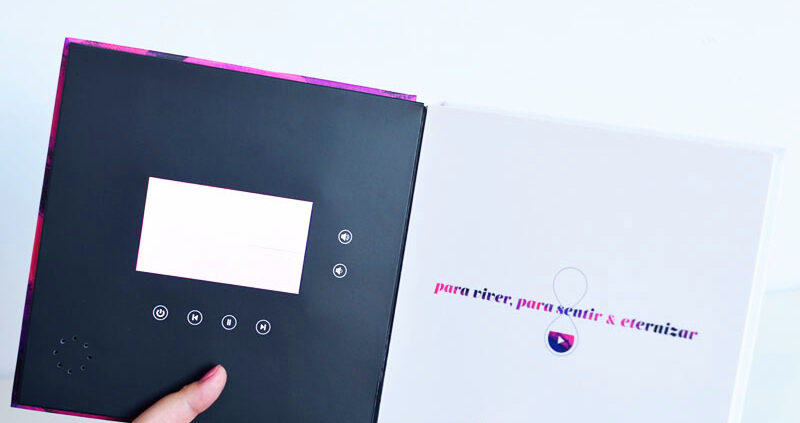The Paradox of Progress: Can Video Brochures Survive Europe’s Sustainability Demands and Hardware Obsession?
Controversial Thesis
Video brochures—a fusion of print’s tangibility and digital interactivity—are hailed as the future of B2B marketing. Yet in the EU, their evolution faces a critical juncture: Can hybrid media thrive amid tightening sustainability mandates and GDPR constraints, or will hardware dependency and regulatory friction stifle adoption?
I. Sustainability vs. Hardware Reliance: A Self-Defeating Cycle?
Data-Driven Irony: While Statista reports a 21% decline in EU print advertising revenue (2024), video brochures paradoxically inherit print’s environmental baggage. Each unit requires lithium batteries, plastic casings, and rare-earth minerals—components at odds with the EU’s Circular Economy Action Plan. LVMH’s 2023 campaign, which deployed 50,000 video brochures for product launches, reduced paper waste by 37% but increased e-waste by 19%. This trade-off mirrors the electric vehicle boom in Germany, where charging infrastructure expansion (39% YoY growth in 2024) fails to offset mining-related ecological damage.
Critical Angle: Does the carbon footprint of hardware production negate video brochures’ green marketing appeal? Hybrid media’s scalability hinges on recyclable tech—a gap most vendors ignore.
II. GDPR’s Silent Stranglehold on Data-Driven Engagement
The Compliance Trap: Video brochures collect user analytics via NFC or QR codes, but GDPR’s “right to be forgotten”.210 complicates data retention. For example, a German industrial supplier reported 32% lower lead conversion rates after deleting user scans upon request, crippling post-campaign analysis10. Contrast this with China, where lax data laws enable Alibaba to track brochure interactions for 12+ months, refining AI-driven personalization.
Provocative Insight: Is GDPR’s privacy-first ethos incompatible with hybrid media’s value proposition? While EU brands tout “ethical engagement,” their Asian competitors leverage data fluidity to dominate ROI metrics.
III. EU vs. China: Divergent Paths in Hybrid Media Adoption
Technological Sovereignty Clash:
-
EU: Hardware-centric innovation (e.g., solar-powered screens) prioritizes durability but raises costs—German-made units are 2.3x pricier than Chinese counterparts.
-
China: Software-driven models (e.g., cloud-based content updates) reduce hardware turnover. ByteDance’s 2024 campaign used QR-code stickers on recycled paper, cutting costs by 58% while achieving 41% higher scan rates.
Strategic Tension: The EU’s fixation on “high-value” hybrid media risks ceding the mass market to agile Asian players.
IV. Future Scenarios: 3 Pathways for 2030
-
Collapse: Stricter eco-regulations (e.g., proposed EU battery passport rules) and GDPR fines (like Apple’s €500M DMA penalty) could render video brochures financially untenable.
-
Adaptation: Shift to “hardware-as-a-service” leasing models (e.g., Philips’ circular lighting) to offset e-waste liabilities.
-
Disruption: AI-powered “virtual brochures” using AR glasses—bypassing physical hardware entirely. Meta’s GDPR fines for data misuse suggest this path remains legally fraught.
Conclusion: A Fork in the Road
Video brochures symbolize Europe’s struggle to balance innovation with sustainability and privacy. Yet without reconciling hardware’s environmental toll and GDPR’s data straitjacket, hybrid media may become a transitional relic—not a transformative force. As LVMH’s CMO quipped: “We can’t market sustainability by being unsustainable.”

